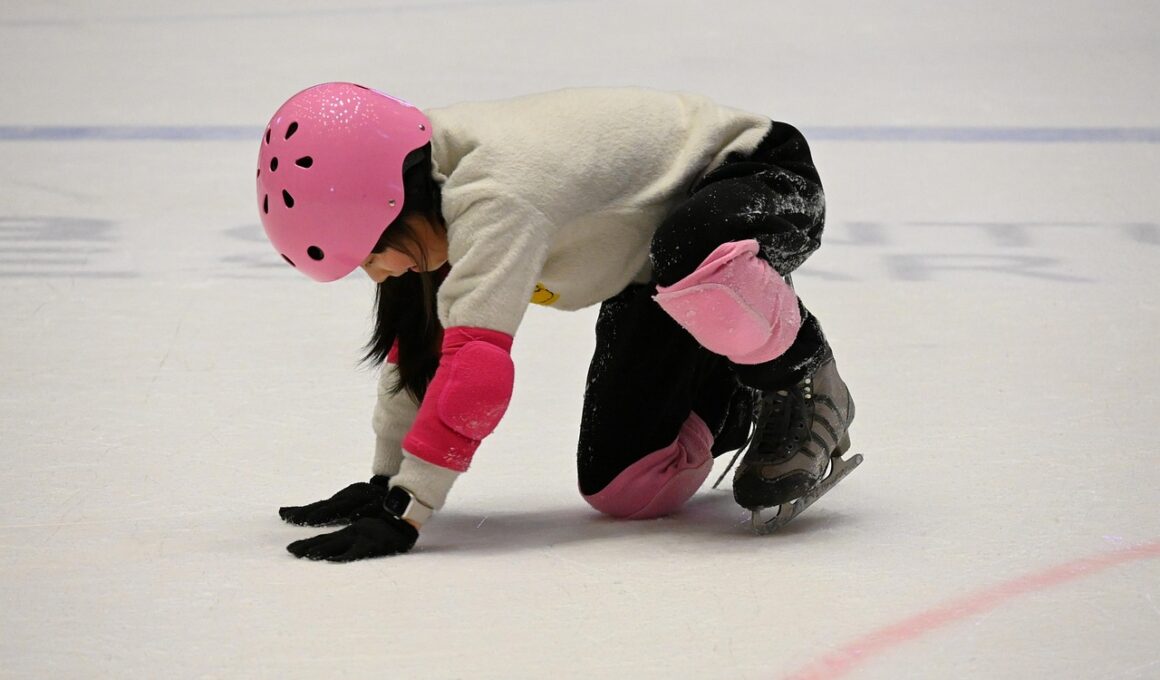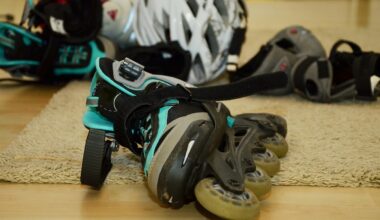Learning to Skate Backwards with Confidence
Skateboarding has evolved significantly over the years, and one skill that attracts many enthusiasts is the ability to skate backwards. Mastering this technique not only enhances maneuverability but also improves overall balance on the board. To start skating backwards, it’s essential to have a solid foundation in basic skating skills. This means comfortable stance, steady speed control, and above all, a strong sense of balance. Practice regularly to build muscle memory for this new trick. The only way to gain confidence is through consistent practice. Once you feel confident riding forwards, try pushing off gently and shifting your weight to your heels when you are ready to transition to skating backwards. Ensure you wear the appropriate protective gear, such as knee pads, wrist guards, and a helmet, to minimize the risk of falls. It’s also beneficial to practice in a spacious area free from obstacles. You may want to utilize a wall or railing for balance while you are getting used to the motion. Keeping your body relaxed while maintaining focus is crucial as it adds to your stability. Remember that learning new skills takes time and patience.
The initial steps of learning to skate backwards involve maintaining a low center of gravity. This allows better control while shifting your weight. Start by standing still, establishing your balance on the inline skates. Gradually ease into a slow roll, concentrating on your posture and weight distribution. Your body should be slightly bent forward and your knees flexed, which will help absorb any surprise bumps. Begin by pushing off your dominant foot while gradually turning your head to look behind you. It’s important to look where you are going, as it helps create a natural flow in your movement and keeps you aware of your surroundings. Use your arms for balance, positioning them as needed and ensuring they enhance rather than hinder your progress. If you start to feel unstable, remember to lean slightly towards your heels while distributing your weight evenly on both skates. During practice, partners can provide valuable feedback and encouragement, increasing your confidence as you master this technique. Focus on small, gradual steps as you learn, as relying solely on speed during your learning phase may lead to falls or frustration.
As you gain confidence in skating backwards, consider incorporating different elements into your practice routine. To spice up your sessions, try adding gentle turns and curves as you roll. This helps you learn to control your movements while maintaining your balance. Practice maneuvering in both directions, as this will ensure that you’re adept at forward and backward skating. Propelling yourself backwards often feels different than skating forward, creating a unique challenge. Encourage friends to join, as skating in pairs or groups can turn practice into a fun and social event. Establishing a positive atmosphere can alleviate stress and enhance motivation. Additionally, don’t hesitate to capture your practice sessions on video. Watching yourself skate can highlight areas for improvement and reinforce techniques you’ve mastered. Always remember to compete against yourself rather than others to derive the most satisfaction from your progress. Each minor accomplishment counts, reinforcing your path toward becoming a proficient backwards skater. This steady approach guarantees you are setting the correct foundation for proper technique, enabling faster mastery and greater enjoyment in your skating journey.
Building Confidence Through Practice
Building confidence in your backward skating technique is undeniably pivotal. After gaining a certain level of proficiency, don’t shy away from attempting to integrate backward skating into your overall routine. Mix shorter backward sessions in with forward skating to develop coordination between both styles. This will significantly contribute to your balance and spatial awareness, both of which are vital when learning new skills in this exciting sport. As you practice, vary the surfaces you skate on. For instance, transitioning from smooth pavement to slightly bumpy asphalt introduces additional challenges, forcing you to adapt and react swiftly. Reflect on your experiences after each session to identify what works well and what needs improvement. This reflective practice gives valuable insights that ultimately boost your skills. If you find yourself feeling stagnant, try to set progressive goals for your sessions. These could involve focusing on distance skated or different backward maneuvers you aim to accomplish while rolling. Documenting your journey over time can motivate you further and highlight your growth in skating backward.
It’s important to incorporate agility drills regularly to enhance your skills while skating backwards. Exercises such as slalom movements around cones can help improve your reaction time and increase your control. Balancing on one foot for brief periods is another effective drill that contributes to a better center of gravity. Incorporating these various drills creates a more comprehensive training routine that helps you develop your versatility. Moreover, don’t forget the crucial aspect of mental preparedness. Visualization techniques can enhance your skating. Picture yourself successfully navigating obstacles, maintaining your balance while skating backwards. Concentrated mental rehearsal can condition you for real-world practice. It builds the neural pathways necessary for skill mastery. Additionally, never underestimate the importance of a supportive community. Connect with other inline skaters who have experience in backward skating. They can offer valuable tips, tricks, and insights that can help you progress in your learning journey. This network of support can enhance your motivation and provide inspiration throughout your development process in this exhilarating sport of inline skating.
Staying Safe and Healthy
Safety remains paramount in your efforts to learn how to skate backward. Adhering to safety protocols can prevent injuries and ensure a healthy skating experience. Always ensure that your skating gear is well-fitted and offers appropriate protection. Regularly inspect your skates to confirm that they are in optimal condition, as wear and tear can significantly impact your performance. If needed, seek assistance with adjusting the fit of your skates to suit your needs perfectly. Build stamina through off-skates training, such as strength exercises and flexibility training, to fortify your body for rigorous skating sessions. Focus on strengthening your legs, core, and shoulders, as these are essential areas for stability when skating. Consistent warming up and cooling down during all training sessions minimizes the risk of injuries. Remember to hydrate well before and after your skating activities to maintain both energy levels and overall performance. A well-rounded approach to your fitness will directly impact your ability to skate with confidence. Practicing safe habits allows you to enjoy your skating without compromising your well-being.
In conclusion, learning to skate backwards with confidence is possible through commitment, practice, and a supportive environment. Embrace the challenges that come your way as they contribute to your growth as a skater. It’s perfectly fine to take a step back and reevaluate your progress, as steady improvement lays the groundwork necessary for success. Skating backwards can significantly enhance your overall skating proficiency, aiding in developing essential skills like balance, speed, and coordination. Make it a goal to integrate backward skating into your regular routines, all while celebrating little victories along your journey. Numerous videos and resources available online can help supplement your learning, providing new perspectives and techniques. Always strive to elevate your skill level while remaining connected to the skating community, as camaraderie can amplify your motivation. Interacting with fellow skaters can introduce you to new challenges and techniques that enhance your enjoyment of skating. Enjoy every ride, and remember: each time you skate, you’re polishing not just your skills but also building lasting friendships within this amazing sport.


